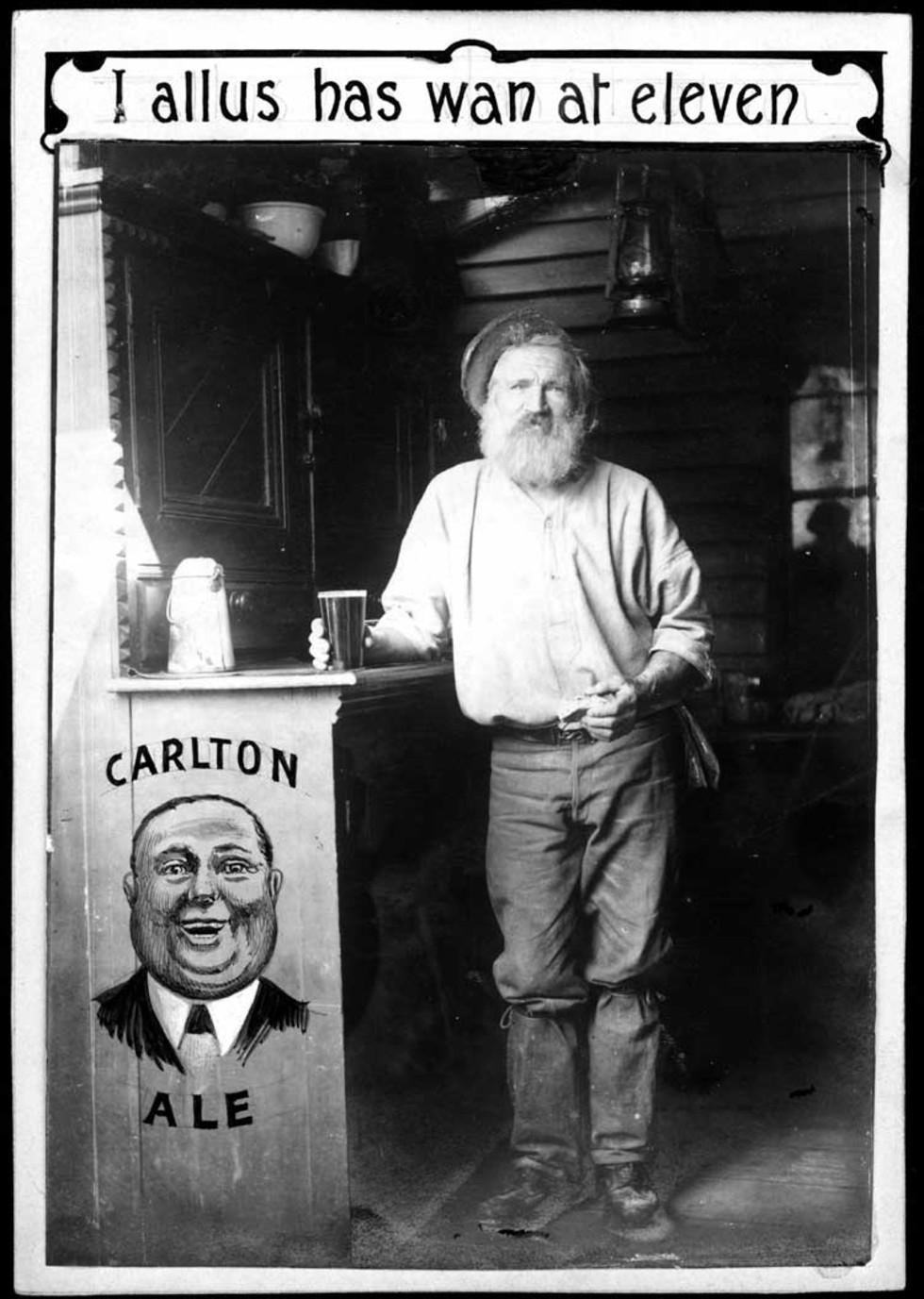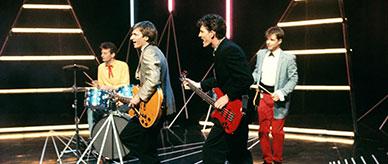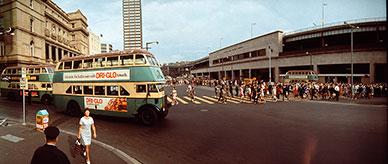


About this record
This is a black-and-white photograph with the text 'I allus has wan at eleven' advertising Carlton Ale, which was registered by the printer, Edgar Newlands, for artistic copyright in 1907. The photograph shows Sam Knott, a gold prospector and bush worker, drinking a Carlton Ale at the McVeigh Hotel near Warburton, Victoria. A Carlton Brewery 'traveller' or salesman may have taken the photograph.
Educational value
- Is an example of an advertisement for beer in this period – breweries launched aggressive marketing campaigns after the Depression of the 1890s saw a downturn in beer sales and forced the closure or merger of many small brewers.
- Shows a beer brand available in this period – ale was the traditional Australian beer of the 19th century, and by the 1900s Carlton Ale was one of the most popular beers in Victoria; today almost all beer produced in Australia is lager.
- Indicates that Carlton Ale was often marketed as a drink for the working man – beer was seen as the drink of working-class men, and beer advertisements often reproduced images (and in this case a slogan) that reflected this; significantly, the Carlton Brewery always had a float in trade union marches in this period.
- Is an example of a successful and enduring advertisement – life-size reproductions of this photograph and caption appeared on advertising hoardings throughout Victoria after 1907.
- Indicates that Carlton has a long history as a brewer in Australia – the Carlton Brewery was established in Carlton, an inner suburb of Melbourne, in 1864, and in 1907 it joined with five other brewers, including Castlemaine and Foster's, to form Carlton and United Breweries Limited (CUB).
- Shows a working man of this period – Knott came to Australia from England in the 1880s to try his luck in the gold fields; there is some evidence to suggest that he was working at McVeigh's Hotel when this photograph was taken; he died soon after, and never received any royalties from CUB.
- Is an example of how a working man dressed in this period – Knott wears a cap, collarless shirt, dungarees, sturdy boots and bowyangs (gaiters), which were strips of lightweight, waterproof material that went from the instep to knee and were usually worn by miners; he also has the bushy beard and moustache favoured by men working in rural areas.
- Gives an example of working-class speech – 'I allus has wan at eleven' (I always have one at eleven); this apparently was Knott's now legendary reply to the photographer's remark that he seemed to be enjoying his beer.
- Shows an advertising image used by Carlton Brewery in this period – the image of the jovial-faced man that appears in this photograph was used in advertisements for Carlton Ale with the caption 'hale and stout', a campaign designed to convince consumers that beer was good for you; this figure disappeared from the final version of the 'I allus has wan at eleven' advertisement.
- Points to a change in community standards for the advertising of alcohol – today the promotion of drinking so early in the day would be seen as irresponsible, although apparently Carlton did not quote Knott in full; legend has it that Knott said 'I allus has wan at eleven, it's a habit that's got to be done. Cos if I don't have wan at eleven, I allus has eleven at one'.
- Shows the interior of a rural pub, or public hotel, in this period – McVeigh's Hotel was built in the 1850s after the discovery of gold near Warburton and included a wide veranda where this photograph may have been taken; the oil lantern hanging behind Knott's head indicates that the photograph predates the introduction of electricity; the pub is now covered by the waters of the Upper Yarra Reservoir.
Acknowledgments
Learning resource text © Education Services Australia Limited and the National Archives of Australia 2010.
Related themes
Need help with your research?
Learn how to interpret primary sources, use our collection and more.


